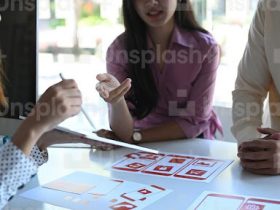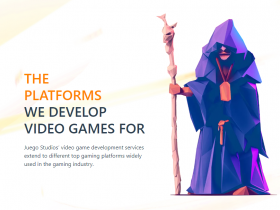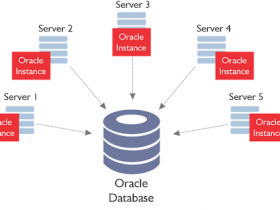In the early 2010s a new trend emerged in web design that is still actual and inviolable in design practice. Today, Chicago web design will deal with the topic of flat design, elaborating on why this design style remains unsuppressed.
What is flat design?
The concept of flat design, in a word, refers to simplicity. This approach considers a minimalistic style emphasizing usability as a principal, with a two-dimensional appeal.
Flat design prefers clean and open space, few colors, crisp edges, and simple visual elements. These characteristics are proven to most successfully convey a message and deliver information.
However, when we talk about it, we must consider its two phases or types. These two kinds are flat design and semi-flat design.
Flat design overemphasizes minimalism by removing even those important webpage options such as raised buttons, icons, and underlined hyperlinks that have the purpose to guide users through the page and CTA. This style often requires excluding the amount of information, risking that, among other things, the information important for communication might also be sacrificed. This type of flat design actually failed in terms of user efficiency.
Semi-flat design, also called flat design 2.0, imparts all the features that the flat design lack in order to provide a superior user experience. This means implementing shadows, gradients, highlights, and hover animations. Added features of semi-flat design make this style a medium between previous flat and three-dimensional.
Nevertheless, today, by flat design, we consider its second and more effective version.
Reasons to opt for flat design?
- There are no distractive elements.
The minimalistic approach presents users with CTA without redundant elements that can distract or get users lost in a crowd of content. it doesn’t leave users with multiple choices but directs their attention straight to a desirable action and provides information promptly.
- Better legibility
In terms of legibility, minimalism again has its advantages over the other styles. With minimalism, there are no sufficient elements that can create a barrier between users and content, allowing the content to take a central palace and provide clear and readable information. Its abundant space and natural typography are responsible for the style’s great legibility and readability.
- Fast-loading page
Besides the fact that the overwhelming and complex design is outdated, a structure with too many page features and elements burdens the site speed. Minimalism also brings the advantage in this aspect as well by excluding unnecessary properties and improving loading speed. Besides the fewer elements, flat design elements are generally lighter and the components are usually code or vector-based graphics, which contributes to fast loading.
- SEO-friendly design
Another good thing about it is that it`s SEO friendly. Previously mentioned advantages referring to loading speed directly influence SEO ranking. Google search engine highly values site speed, therefore it is considered superior over others due to its prospects to speed up loading time and consequently website`s SEO ranking.
The best practice for creating a flat design
- Keep the design “invisible”.
This term might sound confusing, but what we mean by that is to keep the message intact, not allowing the design to overshadow it and steal users’ attention. Keep in mind that the design should be oriented toward communication and not mislead or redirect the user to any other point.
- Colors
The aesthetic of flat design considers using desaturated colors, and a vibrant color palette for messages you want to emphasize. This combination will catch users’ attention without the fear that the message will be blurred by overwhelming page colors.
- Motion
Flat design uses motion to grab users’ attention and focus their attention on the things you want, suggests to users what will happen next, and provides you the ability to place the user within the interface, and certify that users have completed certain operations. Implementing animation will bring a design to life, by adding personality and preventing the design to appear boring and lifeless.
- Illustrations
As for every web design style, illustrations in it are also a crucial part of the user interface. The illustration has to direct the preferences of the target audience.
As flat design prefers simple graphic elements, users can easily and quickly comprehend the message implemented in the illustration.
- Soft UI
Soft UI is a style that refers to a glassy blurred or frost appearance. This approach considers that elements expel and sink from the background, creating different layers and levels of dimension and depth. You can apply pastel colors combined with this effect to achieve a soft and subtle interface.
- Flat-friendly font
When choosing the right font keep in mind that typography should be consistent with the rest of the flat design style. Opt for simple fonts and avoid serifs.
Final Thoughts
As you can see, there are good reasons why it is considered as currently the most beneficial one. It is modern, elegant, well-organized, and most importantly, efficiently delivers the information.




